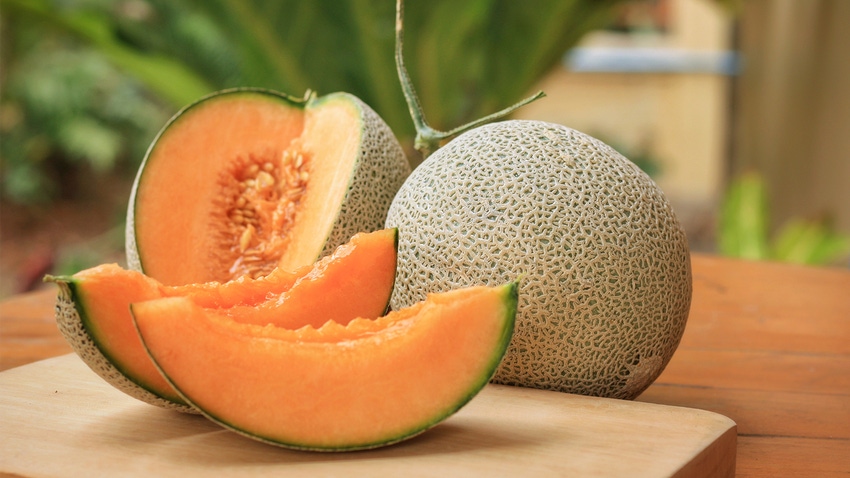Salmonella cases soar to 230 as pre-cut cantaloupe recall continues
Canada, Mexico and United States scramble to halt the salmonella spread caused by pre-cut cantaloupe. What happens next? Experts weigh in.

At a Glance
- Fruit cups containing cantaloupe produced by Kwik Trip, Bix Produce Co. and GHGA LLC were added to the list Nov. 28-29.
- As of Nov. 28, Centers for Disease Control (CDC) received reports of 117 people infected from 34 states.
- Two strains of salmonella have been implicated by FDA, Salmonella Oranienburg and Salmonella Sundsvall.
Updated Dec. 7, 2023: On Dec. 5, TGD Cuts, LLC initiated a recall of specific fresh-cut fruit cup, clamshell and tray products that contained cantaloupe from TruFresh. As of Dec. 7, CDC has reported 230 cases from 38 states, with a latest onset date of Nov. 20. Based on CDC data, 78 of 105 cases reported exposure to cantaloupe and 42 people reported eating pre-cut cantaloupe. An investigation into additional products is ongoing.
Since the initial recall of whole cantaloupes in early November, the issue continues to expand to different brands of pre-cut fruit. According to USDA, fruit cups containing cantaloupe produced by three companies were added to the list Nov. 28-29: Kwik Trip, Bix Produce Co. and GHGA LLC. Quite a few retail outlets have been involved, most recently Kroger, Sprouts Farmers Market and Trader Joe’s.
As of Nov. 28, CDC received reports of 117 people infected from 34 states. The Public Health Agency of Canada reported 66 laboratory-confirmed cases of salmonella as of Dec. 1. The exact number may never be known, as many people do not require medical care. There is also a lag in the system because it usually takes three weeks to four weeks to determine if a sick person is part of an outbreak. CDC data show the first illness was attributed to cantaloupe on Oct. 17. It’s likely reports of illness will continue to trickle into government agencies.
Aside from following an illness trail, this outbreak is complex for several reasons, according to experts. One is the very nature of cantaloupes. The melons have a netted rind, which makes them more susceptible to bacterial attachment than fruits with smoother skin. Cantaloupes are also low-acid food, so if bacteria is introduced through cutting, they have the ideal breeding ground.
A comprehensive study from UC Davis explains that the melon’s rind is a good example of natural packaging because it protects the flesh inside: “Contamination of the melon’s outer surface by microbial pathogens can only result, ultimately, from an external environmental source. Contamination of the internal edible flesh is essentially limited to handling activities somewhere between harvest and plate.”
The supply chain can involve numerous steps, from the field pack or packing facility through cooling, storage, transportation and repacking to wholesale or retail sales. And that’s before the melon ever enters the processing chain that creates cut fruit products.
In this case, “the scope is complex and less than crystal clear,” Trevor Suslow, Ph.D., author of the above paper and professor of cooperative extension and applied research for preharvest to postharvest quality and safety at UC Davis, said. “There are multiple strains of salmonella potentially involved and some uncertainty if there is a single primary source, multiple farm sources from a single shipper, or multiple independent but temporally overlapping sources or co-mingling involved. Integrity of the lot definition and traceability has been problematic from the outset, according to shippers handling imported melons.”
Two strains of salmonella have been implicated by FDA, Salmonella Oranienburg and Salmonella Sundsvall. Canada reports a third strain, Salmonella Soahanina. Suslow stated that finding multiple strains is not uncommon.
“However, the narrow timeframe of the case distribution is certainly suggestive of either a single source, or a narrow regional source, despite the multiple salmonella serotypes involved,” he added. “In our past work, this may be associated with a farming input. Until there is additional investigative information, hopefully based on multinational cooperation in traceback and root cause assessments, everything else is just speculation.”
The cantaloupe that is the source of this outbreak was imported from Mexico. As explained by Fresh Produce Association of the Americas, shipments from the immediate supplier were halted on Nov. 3. U.S. importers conduct verification and certification steps on their foreign suppliers to ensure that imported produce is grown and packed following the same food safety requirements as produce grown in the U.S.
National Commodity-Specific Food Safety Guidelines for Cantaloupes and Netted Melons were issued in 2013 following a 2011 outbreak of listeria in melons. “Cantaloupe growers from Mexico must meet additional food safety requirements as established by the FDA and Mexico’s National Service for Health, Food Safety and Agri-food Quality (SENASICA) through a joint program between the two countries. All exporting cantaloupe farms must be approved by the FDA to export to the U.S.,“ the association stated. On Nov. 27, 2023, FDA issued an import alert for all Mexican cantaloupe calling for detention without physical examination.
Beginning January 2026, additional recordkeeping will be required for all suppliers of melons and other high-risk foods named on the Food Traceability List. The Food Traceability Rule, Section 204 of the FDA Food Safety Modernization Act, will require firms on request to provide FDA trackback information of products named on the list within 24 hours.
Though more case counts are expected to be reported, the limited shelf-life of cantaloupe will bring a natural conclusion to this outbreak. Cantaloupe can be stored up to 21 days.
About the Author(s)
You May Also Like






